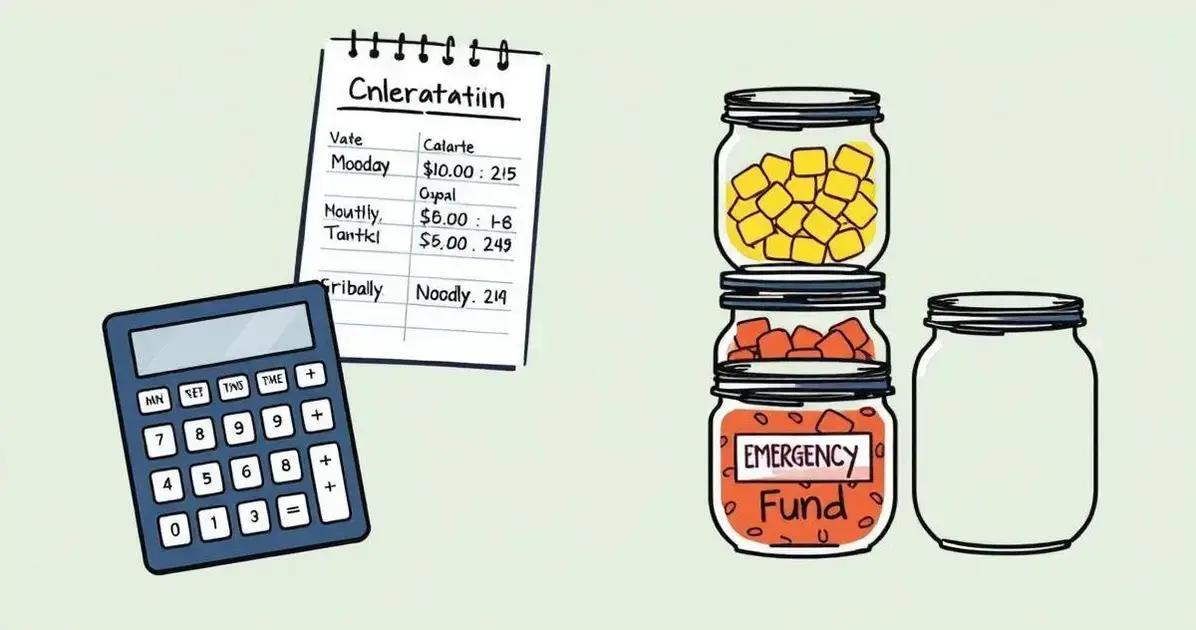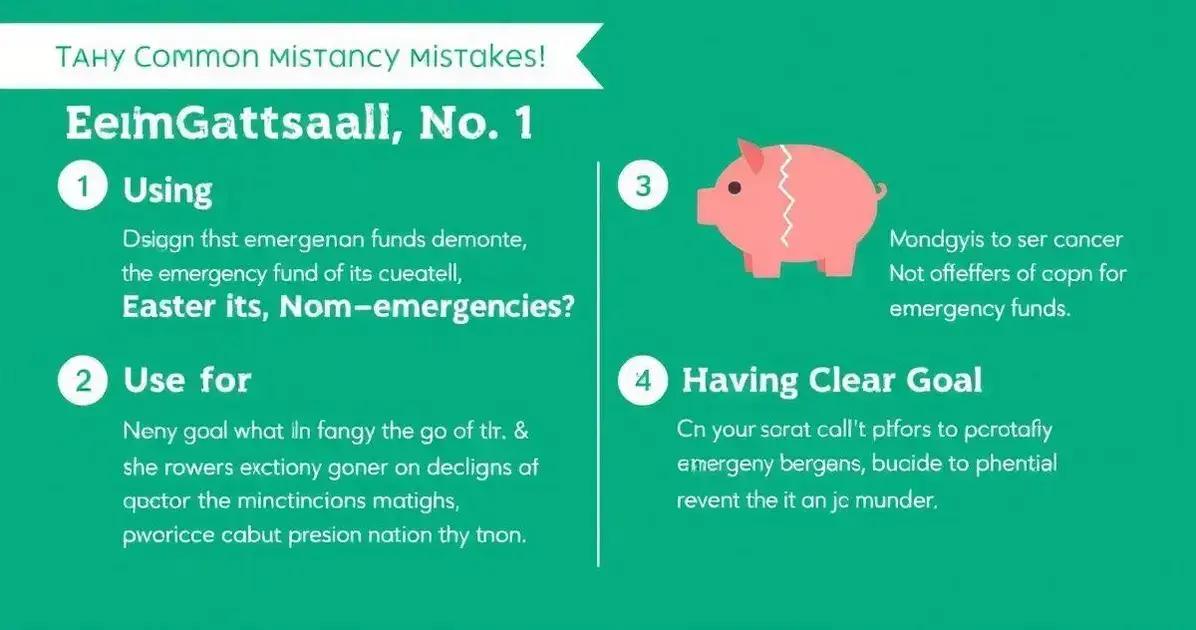Emergency Fund: Why You Need It Now More Than Ever
Advertising
An Emergency Fund is essential for financial stability, consisting of savings set aside to cover unexpected expenses like medical emergencies or job loss. Aim for three to six months’ worth of living expenses, and employ effective strategies to build and maintain this fund securely.
In today’s uncertain world, having an Emergency Fund is more important than ever. This fund serves as your financial safety net, protecting you from unexpected expenses and giving you peace of mind. Let’s explore how to create and maintain your Emergency Fund effectively!
What is an Emergency Fund and Why It Matters
An Emergency Fund is a specific amount of money set aside to cover unexpected expenses or financial emergencies, such as medical bills, car repairs, or job loss. It acts as a safety net, providing you with peace of mind and financial security during tough times. By having an Emergency Fund, you can avoid going into debt when emergencies arise.
Why It Matters
Having an Emergency Fund is essential for several reasons. First, it helps you manage unforeseen situations without stressing about immediate financial constraints. These situations can happen to anyone, and being unprepared can lead to significant financial setbacks.
Secondly, an Emergency Fund can prevent you from dipping into long-term savings or retirement accounts. The goal is to keep those funds for their intended purposes, like retirement or buying a home, rather than using them for unplanned expenses.
Furthermore, establishing a solid Emergency Fund can improve your creditworthiness. When faced with unexpected costs, having funds readily available means you are less likely to rely on credit cards or loans, which can lead to debt accumulation and impact your credit score.
How to Determine Your Fund Size
A good starting point is to save enough to cover three to six months’ worth of living expenses. This amount can vary based on individual circumstances, such as job stability, health conditions, or family commitments. Regularly reviewing your fund size ensures it evolves with your changing needs.
How Much Should Be in Your Emergency Fund?

Determining how much to save in your Emergency Fund is crucial for ensuring your financial safety. A common guideline suggests having three to six months’ worth of living expenses available. This amount can vary based on your personal circumstances, job stability, and financial obligations.
Calculating Your Minimum Goal
Start by calculating your monthly expenses. This includes rent or mortgage payments, utilities, groceries, insurance, and transportation costs. For example, if your total monthly expenses are $3,000, your ideal Emergency Fund would be between $9,000 and $18,000.
Factors Affecting Your Fund Size
Consider your personal situation when deciding on the size of your Emergency Fund. If you have a stable job, you might feel comfortable with three months. However, if you are freelance or in an industry with fluctuating income, leaning toward six months is wise. Other factors such as the number of dependents you have or any ongoing medical expenses can also affect your savings target.
Adjusting Your Fund Over Time
Your Emergency Fund should evolve as your circumstances change. It’s good practice to review it annually. If you receive a raise, have a child, or change your living situation, you may need to increase your savings goal. Regular adjustments will help maintain the fund’s effectiveness.
Ways to Build Your Emergency Fund Quickly
Building your Emergency Fund quickly can provide you with financial peace of mind. Here are some effective ways to bolster your savings in a short time.
1. Set Clear Savings Goals
Determine how much you need for your Emergency Fund and break it down into smaller, achievable goals. For instance, if you aim for $10,000, consider saving $1,000 a month so you can reach your target in ten months.
2. Automate Your Savings
Set up automatic transfers from your checking account to your Emergency Fund. Choose a set amount to save each month, which will make saving easier and more consistent.
3. Cut Unnecessary Expenses
Review your monthly expenses and identify areas to cut back. This might mean reducing dining out, canceling subscriptions, or shopping sales. Allocate those savings towards your Emergency Fund.
4. Utilize Windfalls or Bonuses
Whenever you receive unexpected money, like tax refunds or work bonuses, consider putting a portion directly into your Emergency Fund. This can significantly speed up your savings process.
5. Take on Extra Work
Look for opportunities to earn additional income, such as freelancing, part-time jobs, or selling unwanted items. Use this extra money to boost your Emergency Fund quickly.
Common Mistakes to Avoid with Your Emergency Fund

Managing your Emergency Fund properly is essential, but there are some common mistakes to avoid. Here are key pitfalls to watch out for:
1. Using it for Non-Emergencies
One of the biggest mistakes is dipping into your Emergency Fund for regular expenses or non-urgent purchases. Only use these funds for true emergencies, like unexpected medical bills or urgent home repairs.
2. Not Having a Clear Goal
Without a specific savings goal for your Emergency Fund, it can be easy to lose focus. Set a target amount based on your living expenses, and track your progress regularly.
3. Underfunding Your Savings
Some people underestimate how much they need in their Emergency Fund. Aim to cover at least three to six months’ worth of expenses to ensure you are adequately prepared for unforeseen situations.
4. Neglecting to Replenish
If you do use your Emergency Fund, make sure to replenish it as soon as possible. Failing to restock your savings can leave you vulnerable for future emergencies.
5. Keeping it Too Accessible
While it’s important to have quick access to your Emergency Fund, it shouldn’t be so easy to access that you accidentally spend it on non-emergencies. Consider a separate savings account with a little more effort required to withdraw funds.
Taking Control of Your Financial Future with an Emergency Fund
Establishing an Emergency Fund is not just a safety measure; it’s a fundamental part of financial planning. By understanding what an Emergency Fund is and why it matters, you position yourself to navigate life’s uncertainties with confidence.
Aiming for an appropriate savings amount and adopting effective strategies to build that fund quickly can provide you with the security you need. Additionally, avoiding common pitfalls ensures that your savings remain intact when you need them most.
Ultimately, an Emergency Fund empowers you to face unexpected challenges head-on, reduces financial stress, and promotes a more stable financial future.
FAQ – Frequently Asked Questions about Emergency Funds
What is an Emergency Fund?
An Emergency Fund is money set aside to cover unexpected expenses like medical bills, car repairs, or job loss.
How much should I save in my Emergency Fund?
It’s recommended to save three to six months’ worth of living expenses in your Emergency Fund to be adequately prepared.
What are some effective ways to build my Emergency Fund quickly?
You can build your Emergency Fund quickly by setting clear savings goals, automating savings, cutting unnecessary expenses, and utilizing windfalls or bonuses.
What common mistakes should I avoid with my Emergency Fund?
Avoid using your Emergency Fund for non-emergencies, underfunding your savings, neglecting to replenish it after use, and keeping it too accessible.
How often should I review my Emergency Fund?
It’s advisable to review your Emergency Fund at least once a year to ensure it meets your current living expenses and personal circumstances.
Can an Emergency Fund help improve my credit score?
Yes, having an Emergency Fund can prevent you from going into debt during financial emergencies, which can positively impact your credit score.




